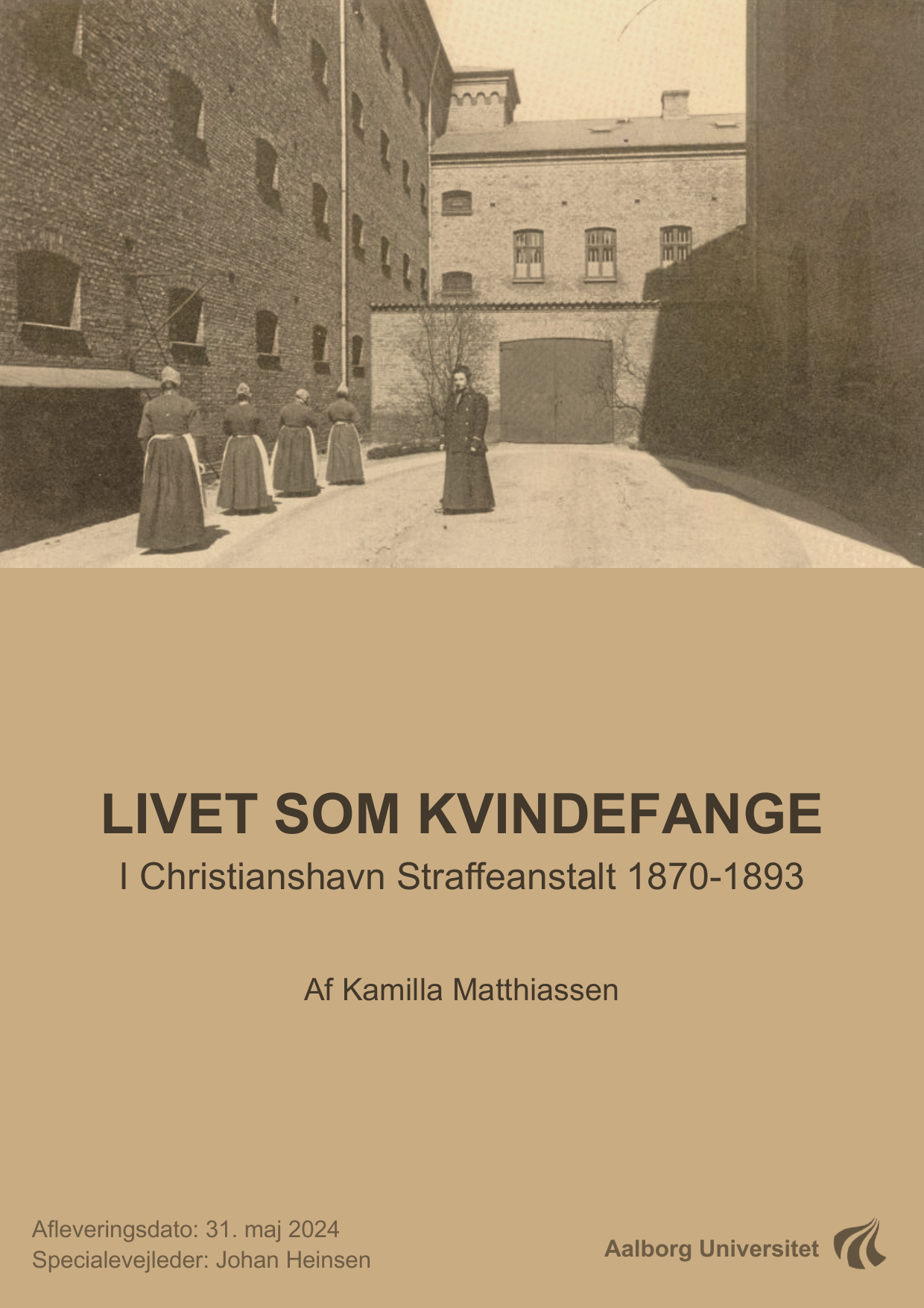
Livet som Kvindefange: I Christianshavn Straffeanstalt 1870-1893
Oversat titel
The Life of a Female Prisoner: In the Penal Institution of Christianshavn 1870-1893
Forfatter
Semester
4. semester
Uddannelse
Udgivelsesår
2024
Afleveret
2024-05-31
Antal sider
80
Abstract
Med udgangspunkt i de 2270 indsættelser, der blev registreret i generalieprotokollen fra Kvindefængslet på Christianshavn i slutningen af 1800-tallet, demonstrere dette speciale, hvordan de indsatte influerede fangenskabets tilblivelse, tilværelse og afslutning. Først gennemgås de taktiske årsagsforklaringer, som kvinderne angav ved deres indsættelse. Dernæst udforskes fangernes udnyttelse af fængslets komplekse indretning til at fastholde den kriminelle tilværelse under opholdet. Endeligt undersøges de indsattes forsøg på at undgå forbryderstemplet efter løsladelsen. Samlet set dækker specialet et kønnet videnshul i dansk fængselsforskning og bidrager samtidigt til den historiografiske tendens om at undersøge fængselshistorien ud fra aktørernes indvirkning og tilpasningsmetoder.
This thesis examines the lives of the inmates in the Women’s Prison of Christianshavn in the 19th century. Based on the record of prisoners, which covers more than 2000 entries, it investigates how the women influenced the creation, existence, and end of captivity. Firstly, this study demonstrates how the prisoners tried to exploit the contemporary view of female offenders by excusing their deviancy. Secondly, it shows how the inmates used the complicated and sedimented layout of the institution to their advantage. Across departments and positions, many women maintained a criminal lifestyle of secret correspondence and illicit trade. In addition to the material goods this provided, it gave the prisoners autonomy within the confines of the prison, thus preventing them from becoming completely subdued. Finally, the prisoners’ agency is further demonstrated by their actions upon release. A common way of escaping the stigma as a criminal was by gravitating towards the underworld of other outcasts. Overall, this thesis confirms the assertion of historiography on the early modern period that the prison was continually developed through the adaptation of the staff and inmates. Furthermore, the study contributes to bridging the gender gap that exists in the field of Danish prison research.
Emneord
